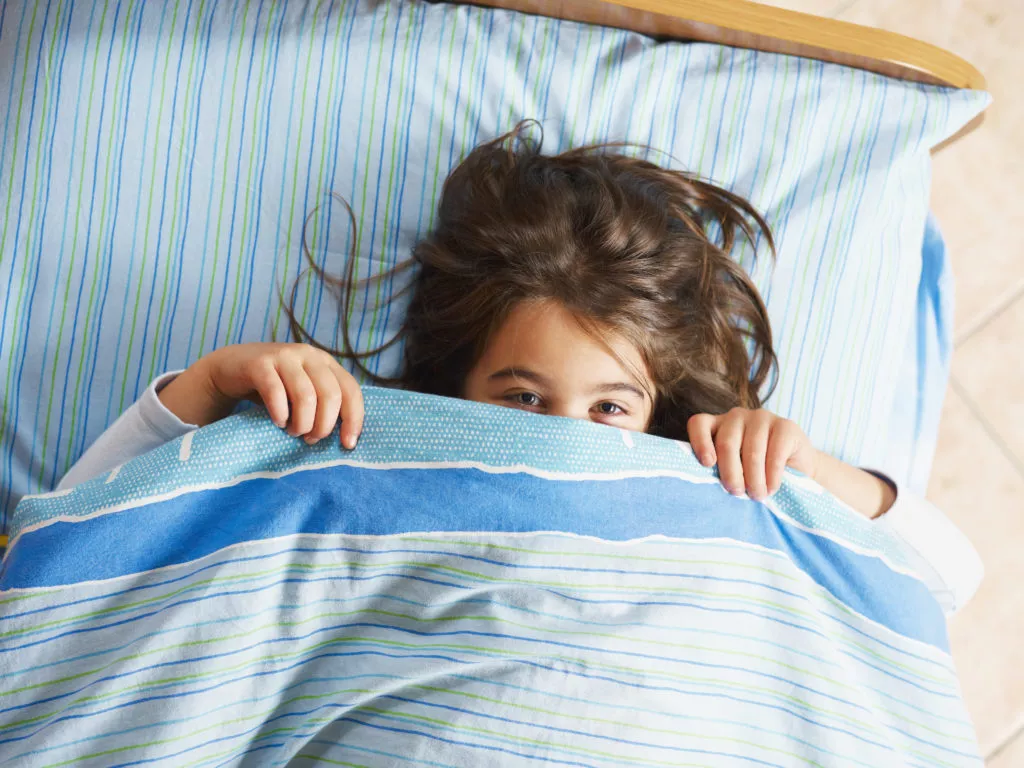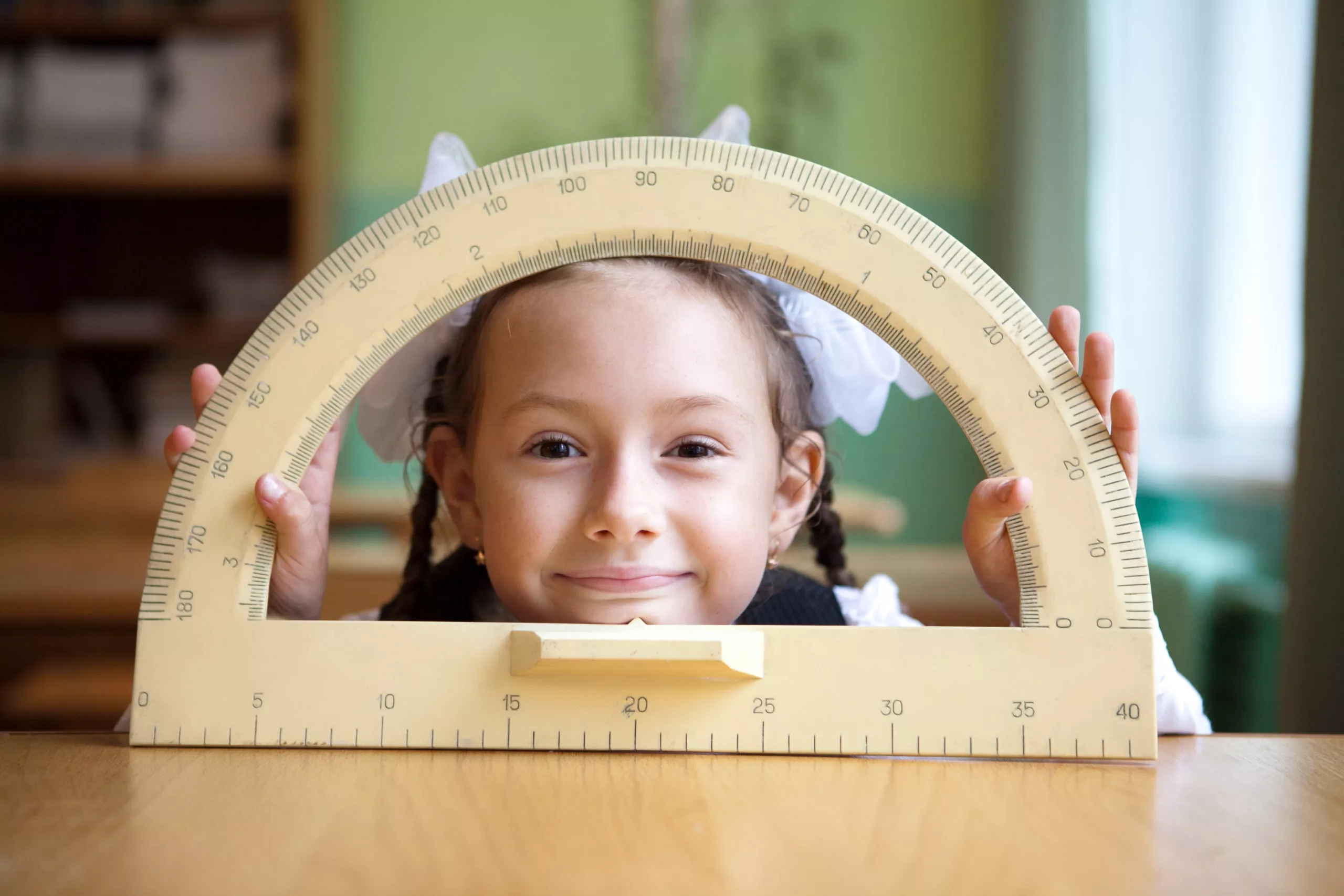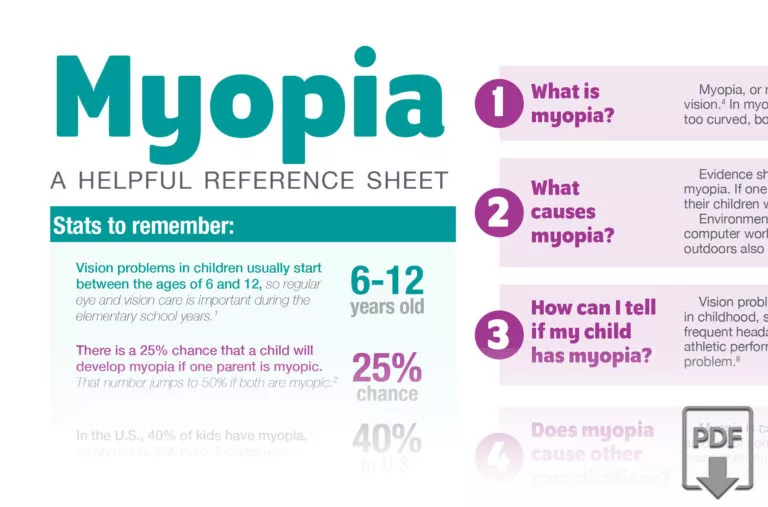
Is your child squinting to see things far away? Are they rubbing their eyes a lot? Do they complain of frequent headaches? Do they ask to move closer to the blackboard in school to see better? These are all potential signs and symptoms of myopia or nearsightedness.
Myopia results from an abnormal elongation of the eyeball, which leads to a refractive error, blurring objects viewed at a distance. In other words, distant objects appear blurry until they are brought close to the eyes.1
When discussing her daughter’s myopia, one parent described it as “an aesthetic issue. She will have to get used to the glasses, there is nothing to worry about.” 2
Unfortunately, too many parents and doctors view myopia as typical in child development. However, in the U.S. alone, 40 percent of kids have myopia, compared to just 20 percent three decades ago, according to the American Academy of Ophthalmology.3 Today, myopia is at epidemic levels and childhood-onset myopia poses a threat to the ocular health of our children. [Read more: Myopia myths vs. facts]
A report from the World Health Organization stated that the prevalence of myopia and high myopia are increasing globally at an alarming rate, with significant increases in the risks for vision impairment.4 By 2020, The World Health Organization (WHO) projects 2.5 billion people will be myopic, and by 2050 myopia is expected to affect half the world’s population.5
“Classically, we haven’t thought of myopia as a disease, but, based on the latest science, we should. Myopia has been shown to be an independent risk factor for glaucoma, cataracts, and retinal detachment, and the higher the myopia—the higher the risk.” – Thomas Aller, O.D.6
Myopia is not a harmless condition and can lead to other serious eye diseases if it progresses. A diopter, which is often abbreviated with the letter “D”, is the unit used to measure the correction, or focusing power, of the lens your eye requires. For example, if your prescription says -1.00, you have one diopter of nearsightedness. 7 When the rate of progression of myopia was studied in children, it was typical to see their eyesight worsen at a rate of -0.50 D per year.8, 9, 10, 11
The severity of nearsightedness is often categorized like this: 12
- Mild myopia: -0.25 D to -3.00 D
- Moderate myopia: > -3.00 D to -6.00 D
- High myopia: > -6.00 D
An eye is considered to have high myopia if it requires -6.0 diopters or more of lens correction. People with high myopia have a particularly increased risk of glaucoma, cataracts, retinopathy, retinal detachment, and loss of visual acuity.13 [Read more: What are the long term risks of myopia in children?]
One mother describes the importance of her daughter’s vision by saying, “If my daughter doesn’t study hard, she’ll be left behind. If her myopia is high, she can always have corrective surgery.” 14
While many parents believe that corrective surgery may be the answer, high myopia can also reduce the possibility of being a candidate for refractive surgeries such as LASIK and increases the risk for complications from these treatments. 15 Any level of undiagnosed myopia can be considered a risk factor for other diseases and/or conditions which may be controlled with proper treatment.16
Managing this anything-but-harmless condition is vital to the ocular health of your child. Because of the many risks that are associated with high myopia, it’s important to take myopia control steps as early as possible to slow progression. Challenge the normalization of myopia, schedule a comprehensive eye exam with your eye doctor today and share your knowledge with others so they can do the same.
Tags: myopia, high myopia, progressive myopia, nearsightedness, myopia in children, myopia management

